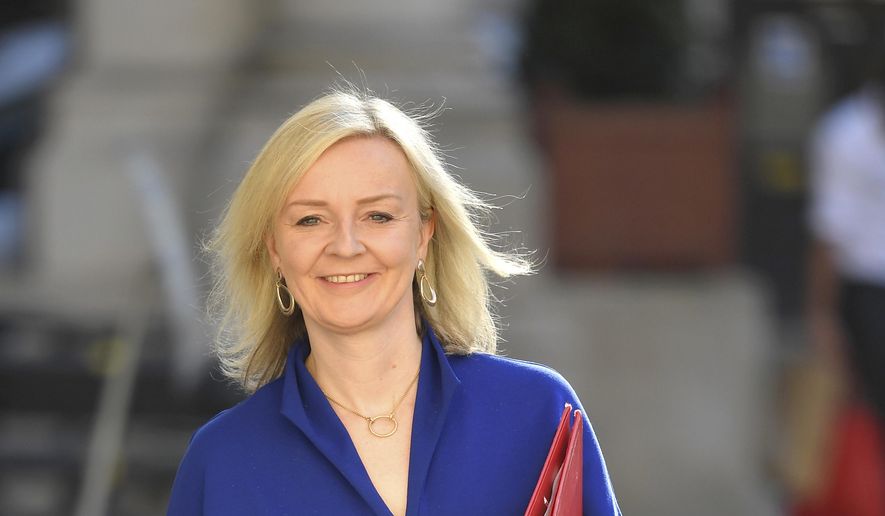The U.K. started the process of joining the Trans-Pacific Partnership Wednesday as it looks to tap into a fast-growing Asian market and strike new trade deals in the post-Brexit era.
The 11-nation trading bloc covers a market of about 500 million people.
The U.K. may not be able to join until next year, but it began the accession process to look for ways to eliminate tariffs on goods such as food, beverages and automobiles.
Joining the bloc “will help shift our economic center of gravity away from Europe towards faster-growing parts of the world, and deepen our access to massive consumer markets in the Asia-Pacific,” U.K. International Trade Secretary Liz Truss said. “We would get all the benefits of joining a high-standards free trade area, but without having to cede control of our borders, money or laws.”
The U.S. was poised to join the TPP, but former President Trump pulled out of the partnership on his first day in office in 2017, saying it disadvantaged American workers and he wanted to strike bilateral trade deals.
The remaining countries reorganized as the “Comprehensive and Progressive Agreement for Trans-Pacific Partnership.”
Its current members are Japan, Malaysia, Vietnam, Singapore, Brunei, Australia, New Zealand, Canada, Mexico, Chile and Peru.
All of those countries border the Pacific Ocean or the South China Sea, so allowing the U.K. into the club would signal a global expansion.
“Article 30.4 of the agreement makes clear that the CPTPP is open to accession by any state ‘as the parties may agree.’ It is not necessary for a state to be in the Pacific region to participate,” according to the Institute for Government, a British think tank.
• Tom Howell Jr. can be reached at thowell@washingtontimes.com.




Please read our comment policy before commenting.